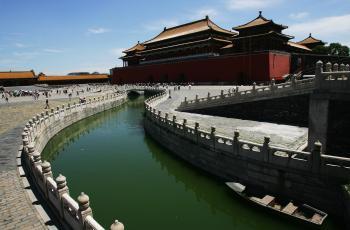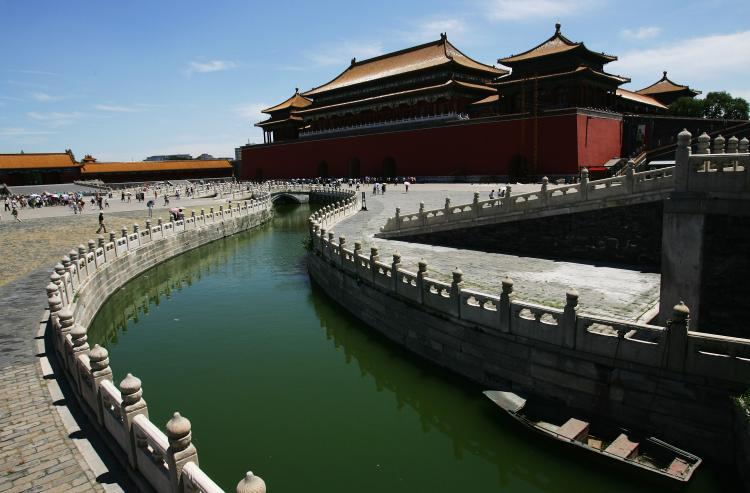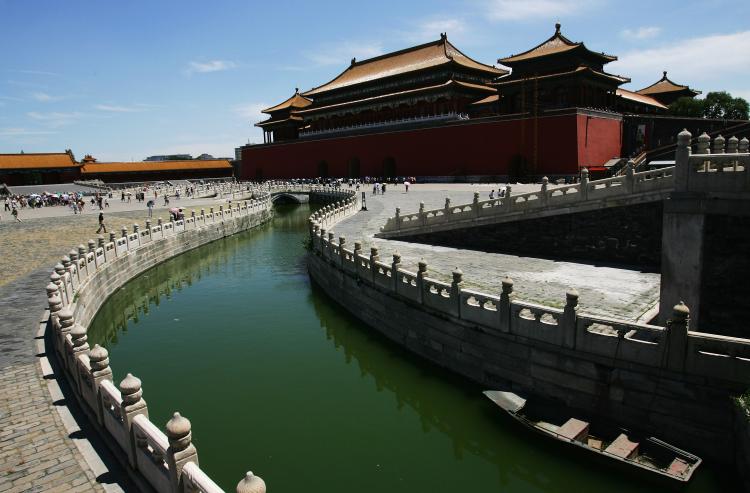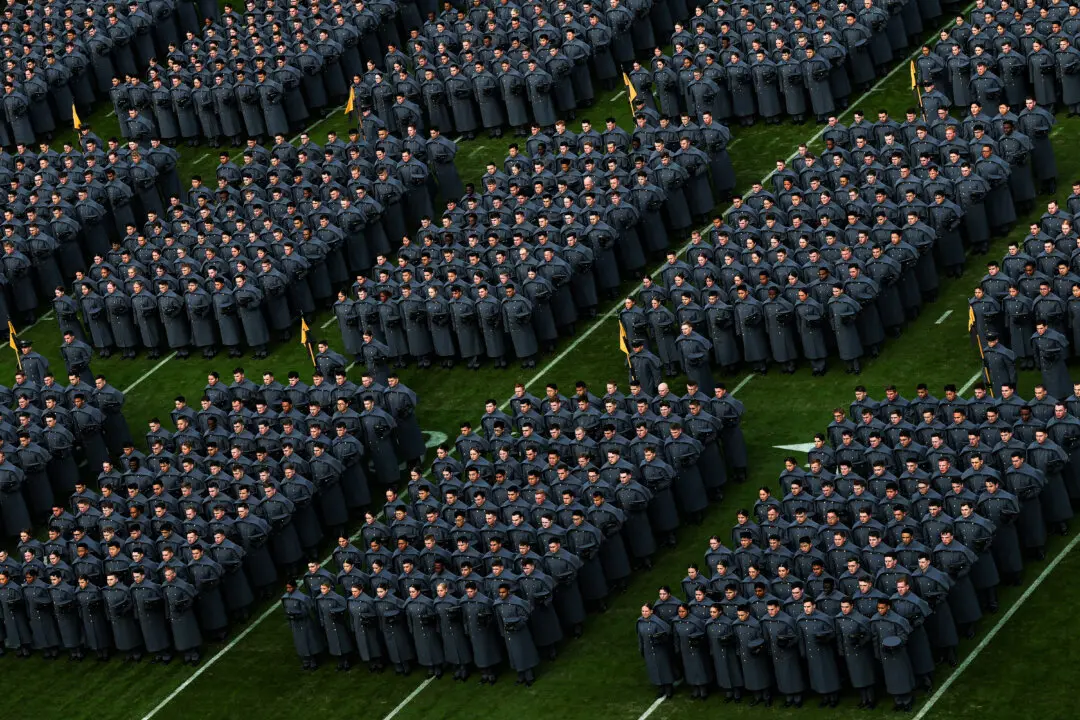On the surface, things of the world may appear to be so complex and disorderly that it seems they have no relation to one another whatsoever. However, the ancient Chinese believed that everything is actually interrelated, and that all things are determined by order and laws.
Ancient Chinese people discovered a law that determines the interrelationships and invisible order of all things in the world: this law is known as the theory of the Five Elements. The Five Elements are metal, wood, water, fire and earth, and they constitute all things on earth.
But the theory of the Five Elements goes far beyond this. With the theory of Five Elements, ancient Chinese were able to explain the corresponding relationships between heaven, earth and humans. For instance, the Five Elements have their correspondence in directions; in the seasons (representing aspects of heaven); in man’s internal and sensory organs; and they even have their correspondence with the emotions, with colors, and with the senses of taste.
The essence of the Five Element theory is the argument that everything exists in mutual-generation and mutual-inhibition. From this, one may understand reasons behind the arrangement of things such as growth, death and how the four seasons comes about. The theory also takes man to be an integral part of nature. Therefore, it makes no sense to observe man without observing his the natural surroundings, and vice versa. All creations in heaven and on earth follow a certain order. Humans, the ancient Chinese said, could not surpass the unity of heaven, earth and man, or the natural laws of mutual growth and restraint.
Most ancient Chinese honored the laws of heaven and earth. Therefore, when they designed buildings, especially large architectural complexes such as an imperial palace, they generally based them on the theory of the Five Elements. The Forbidden City, the imperial palace of the Ming and Qing Dynasties, is a clear example of architectural applications of the theory of the Five Elements.
The Five Elements of metal, wood, water, fire, and earth, have correspondences in the colors, seasons, and directions. The element of wood corresponds to the direction of east, the season of spring, and the color green. It is associated with growth and awakening; therefore, it promotes moderate growth, or rise, similar to when the sun rises in the east.
The element of fire corresponds to the south, the season of summer, and the color red. It is associated with a soaring blaze, and prosperity, similar to when the sun is in the middle of the sky at noon.
The element of metal corresponds to the direction of west, the season of fall, and the color white. It is associated with coolness and expiration, similar to when the sun sets in the west.
Water corresponds to the north, winter, and black. It is associated with chill traveling downward, cold weather, the frozen earth, and long nights in the north.
The element of earth corresponds to the direction of center, the mid-summer, and the color yellow. It is associated with fertility and a moderate degree of maturity. The ancient Chinese would use only the colors of green, yellow, and red for the imperial palaces for their respective correspondences to growth, prosperity and fertility.
Green is associated with vitality and growth. Therefore, green glazed tiles covered the roofs of the eastern palaces in the Forbidden City when the Ming Dynasty was first established. It wasn’t until the period of Jiajing (1522-1566 A.D.) in the Ming Dynasty that yellow glazed tiles replaced the green ones. They wished to display the honorable status of imperial reign extending to all directions with the color yellow, for it connotes supreme status and power.
Green is also appropriate for vigorously growing teenagers, because it is associated with the element of wood and therefore the season of spring. Thus, the palace for the crown prince was referred to as the “Eastern Palace” and it had green glazed tiles on the roof.
The color red is associated with prosperity, and connotes “justice and uprightness.” Therefore, the walls of the Forbidden City and the columns in the palaces were painted with red, which corresponds to Fire.
On the other hand, the Imperial Library of Wenyuan Ge, with its many valuable collections of books, had black tiles on the roof, and black walls instead of red walls. Black corresponds to water, which corresponds to winter, a season of preservation and storage. In addition, the Tianyimen Gate of the Imperial Garden, located at the north end of the central axis of the Forbidden City, corresponds to the element of water because of its location. Therefore, its walls were painted black, to be in harmony with the natural direction and color. Another reason for the black walls of the Tianyimen Gate may be that water subdues fire.
Yellow corresponds to the earth, and the center. The center symbolizes supreme power of one overlooking all directions from the center. Therefore, yellow was reserved exclusively for emperors. The roofs of emperor’s palaces were covered with yellow glazed tiles, and palaces were mostly painted with yellow, or decorated with foil made of real gold.
Ancient Chinese people discovered a law that determines the interrelationships and invisible order of all things in the world: this law is known as the theory of the Five Elements. The Five Elements are metal, wood, water, fire and earth, and they constitute all things on earth.
But the theory of the Five Elements goes far beyond this. With the theory of Five Elements, ancient Chinese were able to explain the corresponding relationships between heaven, earth and humans. For instance, the Five Elements have their correspondence in directions; in the seasons (representing aspects of heaven); in man’s internal and sensory organs; and they even have their correspondence with the emotions, with colors, and with the senses of taste.
The essence of the Five Element theory is the argument that everything exists in mutual-generation and mutual-inhibition. From this, one may understand reasons behind the arrangement of things such as growth, death and how the four seasons comes about. The theory also takes man to be an integral part of nature. Therefore, it makes no sense to observe man without observing his the natural surroundings, and vice versa. All creations in heaven and on earth follow a certain order. Humans, the ancient Chinese said, could not surpass the unity of heaven, earth and man, or the natural laws of mutual growth and restraint.
Most ancient Chinese honored the laws of heaven and earth. Therefore, when they designed buildings, especially large architectural complexes such as an imperial palace, they generally based them on the theory of the Five Elements. The Forbidden City, the imperial palace of the Ming and Qing Dynasties, is a clear example of architectural applications of the theory of the Five Elements.
The Five Elements of metal, wood, water, fire, and earth, have correspondences in the colors, seasons, and directions. The element of wood corresponds to the direction of east, the season of spring, and the color green. It is associated with growth and awakening; therefore, it promotes moderate growth, or rise, similar to when the sun rises in the east.
The element of fire corresponds to the south, the season of summer, and the color red. It is associated with a soaring blaze, and prosperity, similar to when the sun is in the middle of the sky at noon.
The element of metal corresponds to the direction of west, the season of fall, and the color white. It is associated with coolness and expiration, similar to when the sun sets in the west.
Water corresponds to the north, winter, and black. It is associated with chill traveling downward, cold weather, the frozen earth, and long nights in the north.
The element of earth corresponds to the direction of center, the mid-summer, and the color yellow. It is associated with fertility and a moderate degree of maturity. The ancient Chinese would use only the colors of green, yellow, and red for the imperial palaces for their respective correspondences to growth, prosperity and fertility.
Green is associated with vitality and growth. Therefore, green glazed tiles covered the roofs of the eastern palaces in the Forbidden City when the Ming Dynasty was first established. It wasn’t until the period of Jiajing (1522-1566 A.D.) in the Ming Dynasty that yellow glazed tiles replaced the green ones. They wished to display the honorable status of imperial reign extending to all directions with the color yellow, for it connotes supreme status and power.
Green is also appropriate for vigorously growing teenagers, because it is associated with the element of wood and therefore the season of spring. Thus, the palace for the crown prince was referred to as the “Eastern Palace” and it had green glazed tiles on the roof.
The color red is associated with prosperity, and connotes “justice and uprightness.” Therefore, the walls of the Forbidden City and the columns in the palaces were painted with red, which corresponds to Fire.
On the other hand, the Imperial Library of Wenyuan Ge, with its many valuable collections of books, had black tiles on the roof, and black walls instead of red walls. Black corresponds to water, which corresponds to winter, a season of preservation and storage. In addition, the Tianyimen Gate of the Imperial Garden, located at the north end of the central axis of the Forbidden City, corresponds to the element of water because of its location. Therefore, its walls were painted black, to be in harmony with the natural direction and color. Another reason for the black walls of the Tianyimen Gate may be that water subdues fire.
Yellow corresponds to the earth, and the center. The center symbolizes supreme power of one overlooking all directions from the center. Therefore, yellow was reserved exclusively for emperors. The roofs of emperor’s palaces were covered with yellow glazed tiles, and palaces were mostly painted with yellow, or decorated with foil made of real gold.







